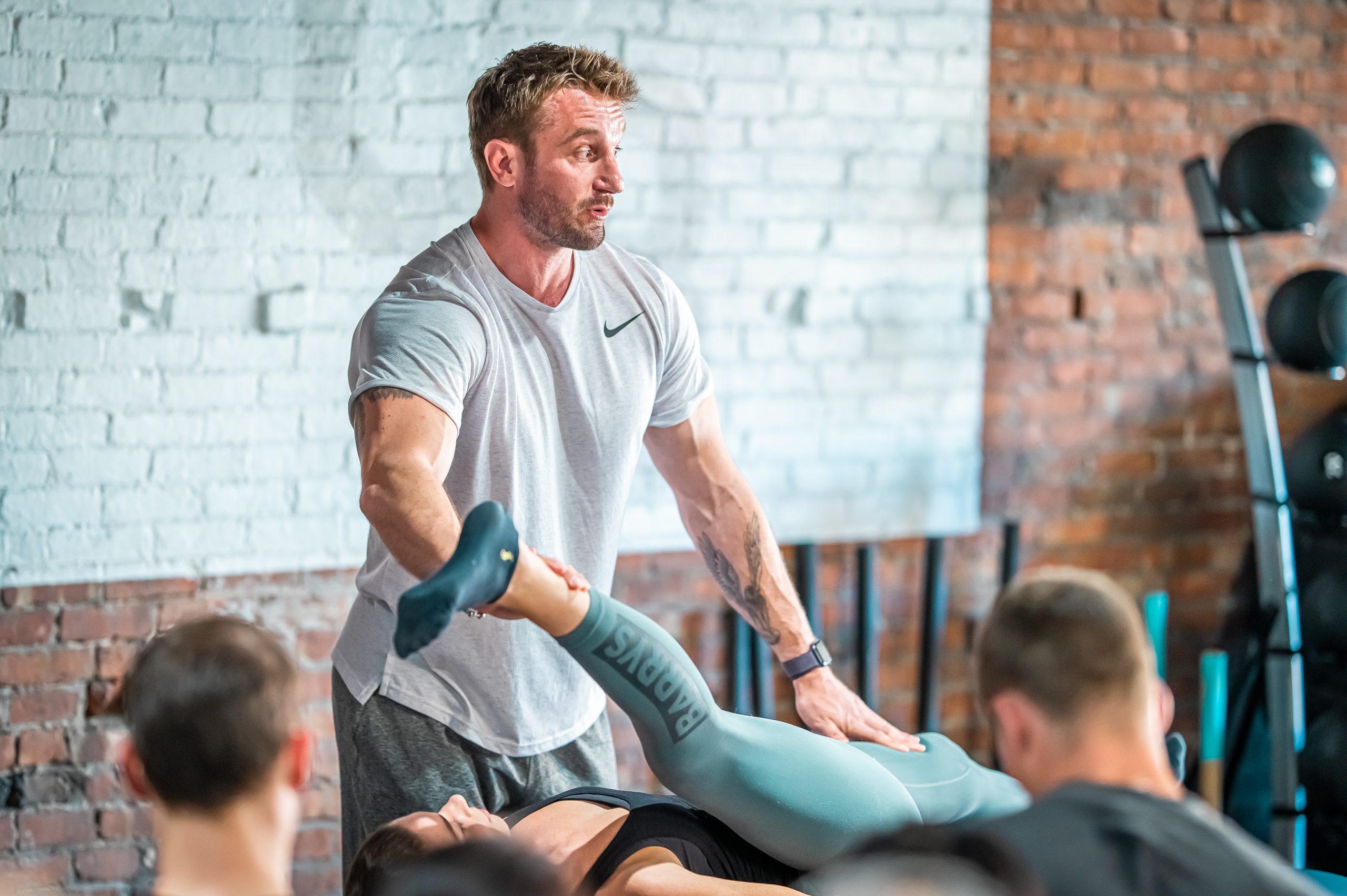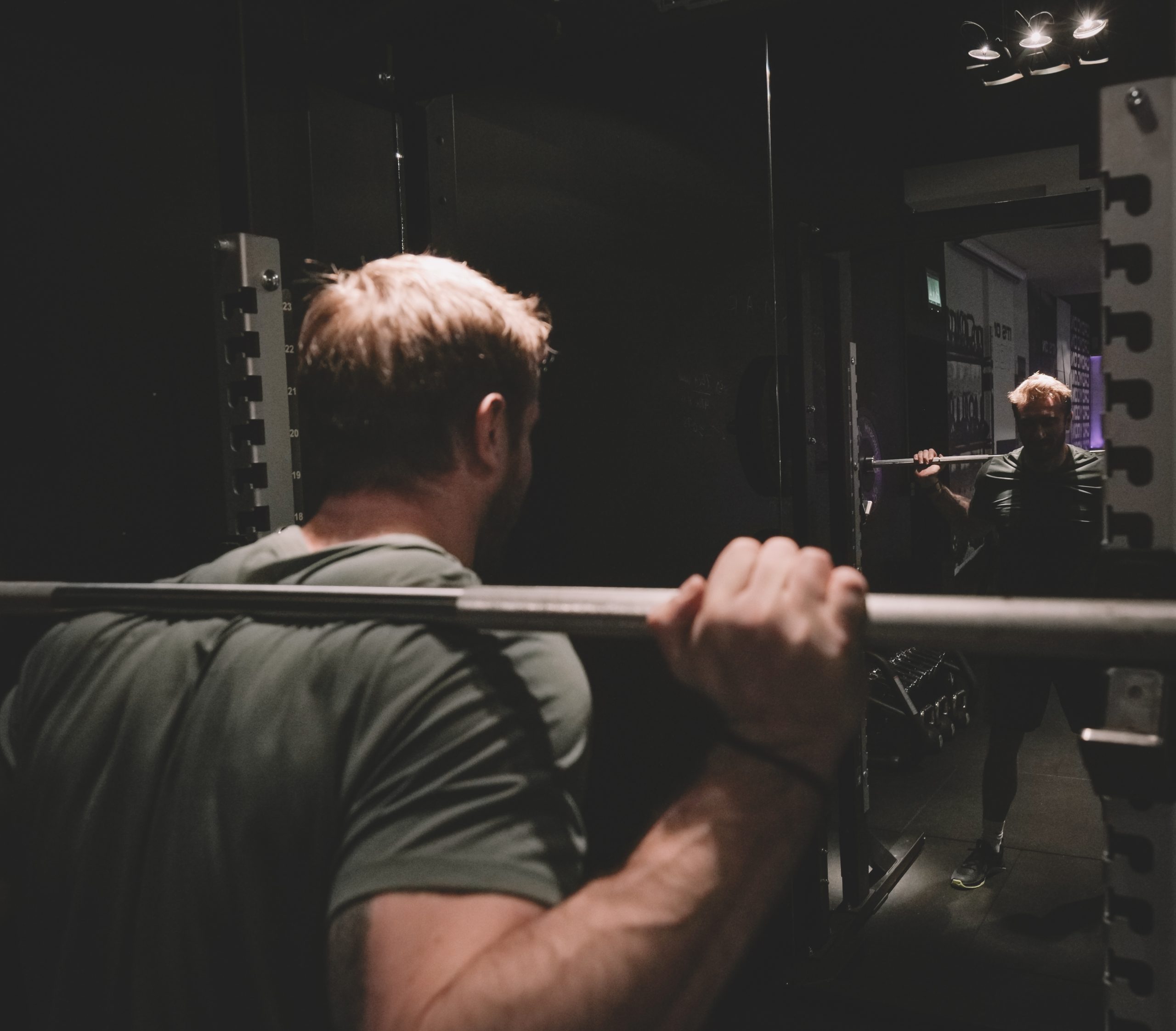Progressive overload is one of the cornerstones of exercise science, it is one of the principles used across all types of training, from everyday gym routines to the structured preparation I use when coaching actors for screen roles. It describes the gradual, structured increase of stress placed on the body so that muscles, bones, and connective tissues adapt and grow stronger. Without it, we don’t see progress. With it, training becomes measurable, purposeful, and effective.
What does Progressive Overload Mean?
At its simplest, progressive overload means doing a little more over time. This can take many forms: lifting heavier weights, performing more repetitions, adding sets, reducing rest periods, increasing mechanical difficulty, or improving movement quality. All of these approaches gradually increase the demand placed on your body, which in turn drives adaptation.
The principle was first identified in the 1940s by physiologist Thomas L. DeLorme, who used resistance training to help rehabilitate injured soldiers returning from World War II. His systematic approach showed that incrementally increasing load was far more effective than repeating the same workout indefinitely. Since then, research has consistently supported progressive overload as a key driver of muscle hypertrophy, strength development, and even improvements in bone density (Schoenfeld, 2010; ACSM, 2009).
In practical terms, this means that if you lift the same weight for the same reps and sets every week, your body has no reason to change. But if you create a structured, incremental challenge, you stimulate adaptation – muscles grow, connective tissues strengthen, and performance improves.
How can you apply progressive overload to a workout?
Progressive overload can be applied in multiple ways beyond simply increasing the weight you lift. By varying how you challenge your muscles, you can continue to make gains safely and effectively. Common methods include:
- Increase the load: Gradually lift heavier weights over time.
- Increase repetitions or sets: Perform more reps or additional sets with the same weight.
- Adjust tempo: Slow down the lifting or lowering phase to increase time under tension.
- Reduce rest periods: Shorter recovery between sets increases training density.
- Improve range of motion or technique: Performing movements more completely or with better form enhances the stimulus.
Each method helps create additional stress on muscles and connective tissues, encouraging adaptation. Rotating these approaches rather than relying on a single method can improve long-term results.
“All progressive overload methods ultimately rely on applying sufficient tension to stimulate adaptation.” — Brad Schoenfeld, 2010
Common Mistakes to Avoid
Even experienced trainees can stall if progressive overload is applied incorrectly. Some common mistakes include:
- Increasing weight too quickly: Jumping loads without proper adaptation can cause injury and limit progress.
- Neglecting recovery: Muscles need time to repair; insufficient rest can lead to overtraining.
- Overtraining certain muscle groups: Focusing too heavily on one area while neglecting others creates imbalances and increases injury risk.
- Ignoring mobility and technique: Poor form or restricted movement reduces effectiveness and may result in strain or injury.
By avoiding these errors and progressing thoughtfully, you ensure steady improvement while maintaining safety and long-term performance.
Consistency and gradual progression are more important than lifting the heaviest weight immediately. I am often saying to clients to ‘leave something for tomorrow’
“Neglecting recovery or technique is one of the most common reasons for stalled progression.” — ACSM Position Stand, 2009
How to Track Progressive Overload
Tracking your workouts is essential to ensure that progressive overload is applied consistently and effectively. Without a record, it’s difficult to know whether you are making meaningful progress or repeating the same workload week after week.
Common tracking methods include:
- Training logs or notebooks: Record exercises, sets, reps, and weights for each session.
- Apps or spreadsheets: Digital tools allow you to track progression over weeks and months.
- Technique notes: Include observations about form, tempo, or range of motion improvements.
Regularly reviewing this information helps you plan incremental increases, monitor plateaus, and adjust your program intelligently. Over time, consistent tracking ensures that every session contributes to measurable improvements in strength, endurance, and changes in body composition.
If we affront tracking progress – we really are just guessing.
“Documenting sets, reps, and weights allows for structured progression and safer increases in load.” — Schoenfeld, 2010
Key Takeaways
Progressive overload is the backbone of effective training. By gradually increasing the stress placed on muscles, tendons, and connective tissues, you stimulate adaptation that leads to greater strength, improved endurance, and better overall performance.
Consistency, tracking, and incremental progression are more important than lifting the heaviest weight immediately. Applying progressive overload thoughtfully also helps reduce the risk of injury and ensures steady, long-term improvement.
Practical Examples
1. Increasing Load
A client performing the bench press with 40 kg for 3 sets of 8 reps could progress over four weeks like this:
- Week 1: 40 kg, 3 × 8 reps
- Week 2: 42.5 kg, 3 × 8 reps
- Week 3: 45 kg, 3 × 8 reps
- Week 4: 47.5 kg, 3 × 8 reps
2. Increasing Volume
Using the same starting weight, the trainee could instead focus on gradually increasing total repetitions and sets:
- Week 1: 40 kg, 3 × 8 reps
- Week 2: 40 kg, 3 × 10 reps
- Week 3: 40 kg, 4 × 10 reps
- Week 4: 40 kg, 4 × 12 reps
Both examples demonstrate how progressive overload can be applied in a controlled and measurable way, either by adjusting load or total repetitions. Over time, these small, deliberate changes drive consistent improvement and help the trainee continue to adapt.
Final Thoughts
Progressive overload works best when the different variables: load, reps, sets, tempo, rest, and range of motion – are applied in a structured, consistent way. This structured application is often the outcome of a thorough assessment in personal training, where exercises and progressions are tailored to your starting point and goals.
A key driver behind all of this is mechanical tension, which plays a central role in stimulating adaptation and growth. You can read more about this in my mechanical tension article to understand how each movement and progression contributes to long-term results.
If you want guidance on structuring progressive overload specifically for you, use the contact form to discuss personal training options and assessments.
References
- DeLorme, T. L. (1945). Restoration of muscle power by heavy-resistance exercises. Journal of Bone and Joint Surgery, 27(4), 645–667.
- American College of Sports Medicine. (2009). Progression models in resistance training for healthy adults.Medicine & Science in Sports & Exercise, 41(3), 687–708.
- Schoenfeld, B. J. (2010). The mechanisms of muscle hypertrophy and their application to resistance training.Journal of Strength and Conditioning Research, 24(10), 2857–2872.
FAQ
What is progressive overload?
Progressive overload is the principle of gradually increasing stress on your muscles over time, through adjustments in weight, repetitions, sets, tempo, rest, or range of motion. This ensures continuous adaptation and improvement.
Do I have to increase weight to make progress?
No. You can also apply progressive overload by increasing reps or sets, improving technique, adjusting tempo, shortening rest periods, or extending your range of motion.
How often should I apply progressive overload?
Gradual, consistent changes are key. This typically means reviewing and adjusting your training variables every 1–4 weeks, depending on your program and recovery.
Can progressive overload cause injury?
If applied too quickly or without proper form, it can increase the risk of injury. Focus on gradual progression and maintain good technique.
How do I know if I’m progressing?
Track your workouts in a log, app, or spreadsheet. Record weights, reps, sets, and notes on form. Regularly reviewing this data ensures you’re steadily increasing the challenge.
What is mechanical tension, and why is it important?
Mechanical tension is the force applied to muscles during training, and it’s a key driver of adaptation and growth.
Can I get personal guidance on applying these principles?
Yes. Structured application of progressive overload is often the outcome of a personalized assessment in training.







Leave A Comment
You must be logged in to post a comment.